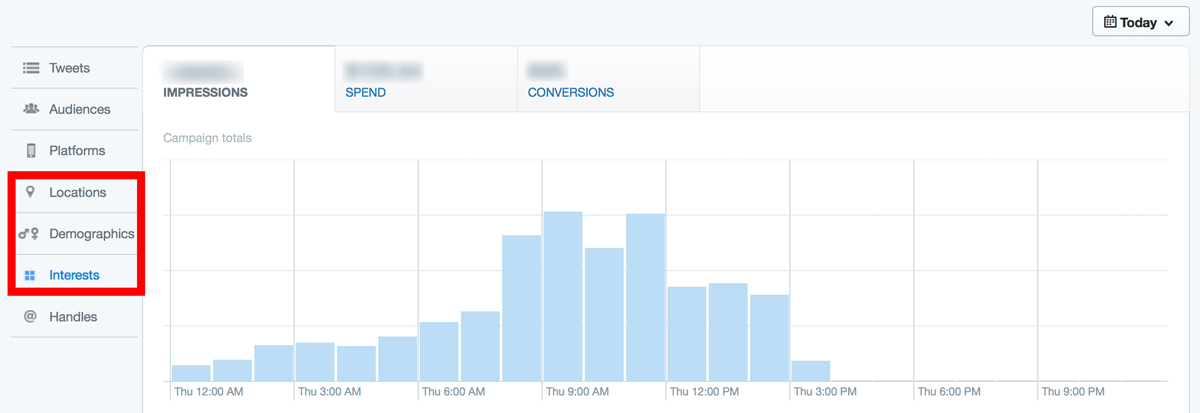Let’s face it, even in today’s data-focused marketing climate, analytics tends to be online marketing’s redheaded step-child.
Campaigns, content, and conversion rate optimization get all the glory and attention, while analytics lurks in the background. It’s there, but—even if it is setup correctly—most marketers only use it to check traffic stats.
There are a lot of reasons why analytics gets the short end of the stick. There’s nothing glamorous or sexy about analytics. It doesn’t even technically produce anything.
Analytics is just data and the majority of marketers didn’t pick their profession because they loved college statistics, right?

Unfortunately, without good analytics, 97% of inbound marketing campaigns fail.
At first glance, that statistic seems insane, but take a look at Hubspot’s State of Inbound report. If you do the math using the numbers in their rather in-depth analysis of inbound marketing, it becomes clear that—if you want to succeed at online marketing—you need awesome analytics.
So, hopefully I’ve sold you on the idea that analytics is critically important to your marketing success.
The question is, why is analytics so important and how do I use my analytics data to really drive profitable results for my company?
Why Analytics Matters
A good analytics setup enables you to make decisions using facts. Without good analytics in place, you’re operating off of gut instinct—which is apparently wrong 97% of the time.
Simply having Google Analytics is not enough, though. You need to understand what your data is telling you and how your site statistics translate into business decisions.
After all, if you don’t know how to effectively use your data, you’re back to operating off of gut instinct…
With that in mind, here are 3 ways you can use analytics data to improve your business:
Traffic
Traffic-focused metrics offer a lot of valuable insight into the appeal of your marketing. For example, if you are running a pay-per-click campaign, metrics like click-through-rate or cost-per-click can be very useful for identifying what kind of ad or ad copy resonates with your audience.
In fact, AdWords offers a lot of traffic statistics that can tell you a lot of helpful information about how your audience is interacting with your ads, such as keyword performance, device segmentation and impression share.
Similarly, most social media platforms offer a variety of useful analytical information you can use to figure out who is responding to your content. For example, Twitter Ad’s Locations, Demographics and Interests sections can be a helpful way to determine what kind of people are clicking on your ads.

Most importantly, however, you should be looking at your website analytics data. Analytics services like Google Analytics or Kissmetrics give you a wealth of ways to see where your traffic came from, who they are (interests, demographics, etc) and how they engaged with your site.
What Your Traffic Tells You
Understanding your traffic is key to understanding why certain aspects of marketing succeed or fail.
For example, say you are a partner in a law firm that averages $3,500 in revenue per new paying customer with a 50% profit margin.
The data for your top 5 campaigns looks like this:

Based on these results, Campaign 3 seems to be the clear winner—it has the most clicks, best click-through-rate (CTR) and the lowest cost-per-click (CPC).
Campaign 4, on the other hand, has by far the most expensive clicks.
However, companies don’t make money off of clicks. Traffic helps you understand who is responding to your ads, but it doesn’t tell you whether or not they are responding to your website.
To get at that information, you need to know whether your traffic is actually converting.
Conversions
Conversion metrics tell you whether or not your site meets the needs of your traffic. This data helps answer 2 very different questions.
1. Does your site work for your potential customers?
If a decent percentage of your traffic is converting (buying your product, submitting a lead form, etc), your landing page and/or website is a good match for the expectations and needs of your traffic.
If your traffic isn’t converting well, it may mean that something about your landing page/website isn’t working for your traffic. There may be distracting elements, too many options, excessively long content or forms…the list goes on.
Fixing these problems is the whole point of conversion rate optimization (CRO). If you’re getting a lot of traffic and you can’t figure out why it isn’t converting, change or get rid of a few site elements! The results may surprise you.
2. Do you even have the right traffic?
As marketers, we have a tendency to assume that if our traffic is converting, there must be something wrong with our website. Our ads got people to our site, so it must be the site’s fault that they aren’t converting, right?
Unfortunately, the fact of the matter is: the wrong traffic will never convert, no matter how optimized your website is.
So, if you aren’t happy with your conversion metrics, it’s often worth it to start by taking a look at your traffic. Are there particular traffic sources that convert poorly? Do particular types of traffic (specific demographics, interests, etc) convert better than others?
If you are driving a lot of traffic that converts poorly (especially if you are paying for that traffic), one of the easiest ways to improve your conversion rate is to improve the traffic to your site.
What Your Conversion Metrics Tell You
In the case of our law firm hypothetical, let’s look at our conversion data:

Despite its relatively poor conversion rate (CR), Campaign 3 still seems to be outperforming all the others. In this case, the cost-per-click was low enough to overcome the effects of the low conversion rate.
Campaign 4, however, continues to take last place. Between its lousy conversion rate and high cost-per-click, it’s producing leads at nearly 9x the cost of a lead from Campaign 3.
Now, given the fact that the conversion rate for Campaign 3 is about half the conversion rate for Campaign 1, Campaign 3 could probably be performing better. Maybe a good chunk of the traffic doesn’t find the site relevant or the campaign is pointing to a landing page that converts poorly.
Either way, the conversion data suggest that there is room for improvement.
Setting Up Conversion Tracking
Unlike traffic, setting up conversion tracking does take a little bit of extra legwork. The rewards, however, far outweigh the fairly minimal effort required to get things set up.
For advertising platforms like Google AdWords, Bing Ads, Facebook, or Twitter, tracking web conversions is quite easy (just click on the links for explanations on how to set up conversion tracking).
Phone calls, however, can be a bit more difficult. Google has a built-in solution for AdWords advertisers (click here for info on how to set that up), but otherwise you’ll need to look into a call tracking platform.
In my experience, only about 25% of companies have call tracking in place, even when phone calls are their main source of web leads! So, if you’re looking for a way to get ahead of the competition, call tracking is a great place to start.
That being said, the value of a call varies from business to business, so you may want to weight different types of leads (calls, form submissions, chats, etc) differently depending on their worth to your company.
Overall, conversion tracking is a fantastic and relatively easy way to get more out of your campaigns. So, if you haven’t done it already, stop reading this article and get conversion tracking in place!
Enough said.
Sales
As helpful as traffic and conversion data is, neither one answers the most important advertising question: “Are my campaigns profitable?” This is where a good CRM (Salesforce, Nimble, Zoho, etc) comes into play.
The ultimate goal of any marketing campaign is to drive revenue for the company. In other words, if you really understand the effectiveness of your marketing campaigns, you need to track ads, keywords and other campaign metrics all the way through to the sales they produce.
Let’s take one last look at our law firm and see how their sales data panned out:

Looking at this information, it suddenly becomes clear which campaign is actually benefiting the company the most.
Campaign 3, our winner for traffic and conversion metrics, has the worst sales rate (SR) and the highest cost-per-sale (CPS).
Even more importantly, since fulfillment eats up half the revenue from a sale and the return-on-investment (ROI) for this campaign is only 92%—the firm is losing money on cases from this campaign.
On the other hand, Campaign 4, which had looked like our biggest loser, is actually the most profitable campaign.
Perhaps traffic to Campaign 4 is lower in the sales funnel than traffic in Campaign 3, which is why cost-per-click (and the sheer number of clicks) was lower. Maybe the landing page for Campaign 4 traffic does a better job of filtering leads, resulting in a lower conversion rate.
Regardless of the specific reasons for Campaign 4’s profitability, this sort of scenario is not uncommon. I have seen these sorts of results play out time and again for companies in all sorts of industries.
Unfortunately, most companies don’t bother to track their advertising effectiveness through to their sales numbers. As a result, they end up wasting large portions of their marketing budgets on campaigns that produce surface-level results.
That’s a high price to pay for ignorance.
Does it take extra effort to set up and manage a CRM? Yes, but knowing which campaigns really drive value for your business is well worth the time and expense. The discoveries you make may change how you market your business.
Conclusion
For marketers, what you don’t know really can hurt you. Ignorance is not bliss—it’s a near-guarantee of campaign failure.
If you want a better than 3% chance of success, you need to understand how traffic, conversions and sales affect your business and how to use them to improve the effectiveness and profitability of your marketing campaigns. Use your analytics correctly and watch your campaigns take off!
You’ve heard my two cents, now I want to hear yours. Do you agree with this approach? How do you use traffic, conversion and/or sales data to improve campaign performance?
To view the original article Click Here

No comments:
Post a Comment